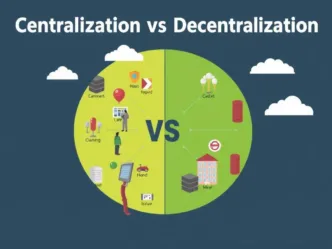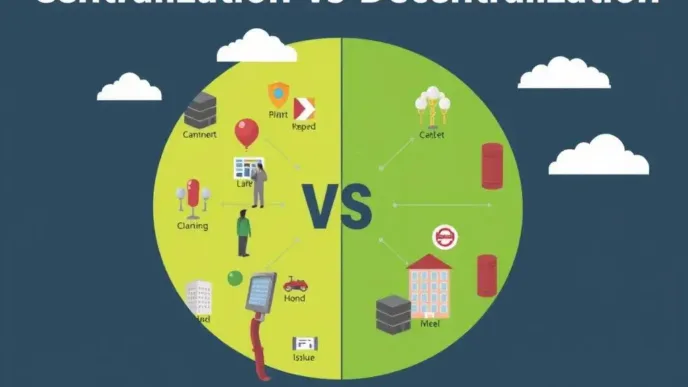Explore the meaning and definition, difference between Money Market Account (MMAs) and High-Yield Savings Account (HYSAs) to make informed saving decisions. Discover their unique features, performance metrics, and how to optimize your savings strategy for maximum growth and liquidity.
Money Market Account vs High-Yield Savings Account Difference: Decoding the Nuances of Secure Saving Strategies 💰
In the realm of personal finance, where prudent allocation of funds can compound into substantial security, money market accounts (MMAs) and high-yield savings accounts (HYSAs) emerge as premier vehicles for low-risk growth. Both offer FDIC-insured protection up to $250,000 per depositor and interest rates far surpassing traditional savings options, yet they cater to distinct preferences in accessibility, liquidity, and yield optimization.
As of October 2025, with rates hovering around 4-5% amid a stabilizing economic landscape, discerning their differences empowers informed decisions for emergency funds, short-term goals, or portfolio diversification. This analysis encompasses foundational definitions, structural variances, performance metrics, accessibility features, regulatory frameworks, practical applications, advantages and limitations, and forward-looking considerations, providing a holistic framework for savers navigating these instruments.
Foundational Definitions: Establishing the Baseline 📖🔍
A money market account functions as a hybrid deposit product, blending savings stability with limited checking-like conveniences, such as debit card access or check-writing privileges. Regulated under Federal Reserve guidelines, it invests depositor funds in short-term, low-risk securities like Treasury bills, aiming to deliver competitive yields while maintaining liquidity. This structure appeals to those seeking a bridge between pure saving and transactional ease.
In contrast, a high-yield savings account prioritizes elevated interest accrual through online banking models, eschewing physical branches to minimize overhead and pass savings to account holders. It operates as a straightforward deposit repository, emphasizing compounding returns without transactional frills, ideal for passive wealth accumulation in a digital-first era.
Meaning & Definition of Money Market vs High-Yield Savings Account
Both are safe, liquid, rate-responsive places for emergency funds or short-term goals; the choice boils down to whether you need immediate spend-access (MMA) or simply maximum rate with next-day liquidity (HYSA).
Structural Variances: Accessibility, Requirements, and Features ⚖️🏦
The most salient distinctions manifest in operational design and user constraints. MMAs typically impose higher minimum balance thresholds—often $1,000 to $10,000—to unlock optimal rates, with transaction limits capping withdrawals or transfers at six per month under Regulation D, though recent deregulations have relaxed this for many institutions. They incorporate hybrid elements, including limited ATM access or check issuance, fostering a quasi-checking experience.
HYSAs, conversely, frequently waive minimums or set nominal thresholds ($100 or less), granting unlimited electronic transfers while prohibiting in-person withdrawals to preserve yield integrity. This streamlined approach, prevalent among fintech providers, enhances portability across digital platforms but forgoes check-writing capabilities.
Performance Metrics: Yields, Compounding, and Risk Profiles 📈📊
Yield comparisons reveal subtle edges. As of early October 2025, top HYSAs offer APYs around 4.44%, outpacing MMAs at approximately 4.32% for equivalent principal amounts, translating to modest differences over time—for instance, $20,000 in a HYSA might accrue $439 in six months versus $427 in an MMA. Both employ variable rates tied to the federal funds rate, subject to monthly fluctuations, yet MMAs may exhibit slight volatility due to underlying securities.
Risk remains negligible in both, with FDIC coverage ensuring principal safety, though MMAs occasionally dip below 1% if balances falter, imposing opportunity costs absent in HYSAs’ consistent tiering.
Regulatory and Security Frameworks: Safeguards and Compliance 🛡️📜
Both adhere to stringent U.S. banking regulations, including FDIC insurance and anti-money laundering protocols. MMAs, classified as deposit accounts, benefit from identical protections but face nuanced scrutiny under the Truth in Savings Act for fee disclosures. HYSAs, often from online-only entities, leverage the same safeguards while emphasizing cybersecurity through multi-factor authentication, reflecting their digital vulnerability.
Practical Applications: Tailoring to Financial Objectives 🎯💼
MMAs suit scenarios requiring occasional liquidity, such as funding near-term expenses or serving as a business buffer with check access. They align with conservative portfolios where hybrid functionality mitigates the need for multiple accounts.
HYSAs excel for pure accumulation, like building emergency reserves or saving for vacations, where seamless app-based transfers and automated round-ups amplify compounding without balance penalties.
Advantages and Limitations: A Balanced Assessment 📊
MMAs’ strengths include transactional flexibility and potentially higher baseline yields for qualifying balances, though limitations encompass stricter requirements and fee risks for low maintainers. HYSAs boast superior accessibility and competitive rates without minimums, but lack check features and may incur transfer fees from linked accounts.
Forward-Looking Considerations: Trends Shaping Choices 🔮📅
By late 2025, fintech innovations like AI-driven rate alerts and embedded insurance could blur lines further, with HYSAs gaining from blockchain-secured transfers. Economic forecasts suggest sustained yields amid moderated inflation, favoring diversified holdings across both for optimal risk-adjusted returns.
High-Yield Savings Account (HYSA) vs Money Market Account (MMA)
Updated September 2025
| What’s different? | High-Yield Savings | Money Market Account |
|---|---|---|
| APY range today | 4.30 – 4.60 % | 4.35 – 4.55 % (practically the same) |
| How you reach your cash | Transfer-only → move to checking first (1-3 h delay). | Instant → debit card + checks supplied by most banks |
| Opening / ongoing minimum | Often $0 – $1 | Commonly $500 – $5 k (though a few are $0) |
| Monthly withdrawal cap | None legally, but many banks still enforce 6/mo; excess-transaction fee ~$10. | Same 6/mo “savings-limit” culture; fee if you exceed |
| FDIC / NCUA insurance | Yes, $250 k per depositor, per bank. | Yes, same coverage |
| Best use-case | Emergency fund you don’t touch often; pure rate-chasing. | Everyday “parking-lot” money you may spend quickly (rent, tuition, quarterly taxes) |
Bottom line
Keep at least one no-minimum HYSA as your back-up bucket and you’re covered on both fronts.
Rate spread is <0.1 %—pick the higher APY unless you need same-day liquidity; then choose the MMA with debit-card access.
In conclusion, while MMAs offer a versatile hybrid for balanced liquidity and yields, HYSAs prioritize unencumbered growth through digital simplicity. Selecting between them hinges on individual liquidity needs and risk tolerance, ensuring alignment with broader financial wellness. Should you seek refinements to specific sections, expansions on examples, or adaptations for particular scenarios, please provide additional guidance.














Leave a Reply